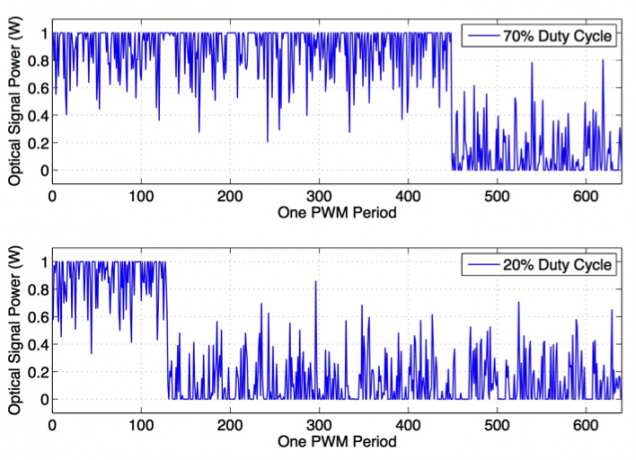Reverse-Polarity Optical OFDM for Combining Dimming and Data Modulation
Our goal of using overhead lights (luminaires) to achieve data communication requires meeting the demands of the consumer and the needs of the data delivery channel. These two processes can be in conflict, when for example, dimming lights in a room is to the detriment of the data modulation format, leading to poor communications performance.

Combining dimming with data modulation using OFDMTo address this limitation, we have devised a scheme that combines the industry-standard dimming technique – pulse width modulation (PWM) – with a highly efficient data modulation format, called orthogonal frequency division multiplexing (OFDM). OFDM is widely implemented in various communication standards.
To address this limitation, we have devised a scheme that combines the industry-standard dimming technique – pulse width modulation (PWM) – with a highly efficient data modulation format, called orthogonal frequency division multiplexing (OFDM). OFDM is widely implemented in various communication standards.
The key to our technique is to map the OFDM signals onto the on and the off periods of the PWM signal through an inversion process. The graphic on the left, shows how dimming at different levels (70% and 20%) is possible while still preserving the OFDM signal shape. In this case, the data rate and the bit-error performance are maintained with in a wide dimming range of operation.
By supporting the PWM dimming format, the new modulation scheme has promise for speeding the adoption of light-based communications technologies into existing LED-based lighting systems.
The technique is described in detail in an article published as H. Elgala and T.D.C. Little, “Reverse Polarity Optical-OFDM (RPO-OFDM): Dimming Compatible OFDM for Gigabit VLC Links,” Optics Express, Vol. 21, Issue 20, pp. 24288-24299 (2013).